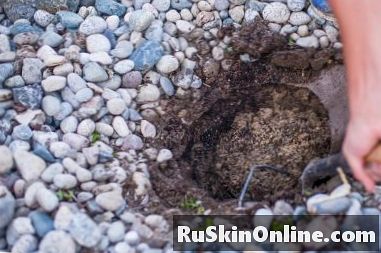
Content
- For rock garden substrate good drainage properties are important
- Mix rock garden earth yourself - That's how it works
- Pase earth for limescale and lime-returning plants
- Earth for limescale plants
- Earth for lime-returning plants
- Mulch soil surface with rock chips
- Tips

In the rock garden, good drainage is particularly important
For rock garden substrate good drainage properties are important
Above all, rock garden soil should have good drainage properties, since most typical rock garden plants prefer dry locations. Commercially available compost soil with its high nutrient contents, however, is unsuitable because the rock garden plants used on barren soils require only low nutrient concentrations.
Mix rock garden earth yourself - That's how it works
It is, of course, ideal to mix the soil from existing, weed-free topsoil and fine gravel or gravel. For "normal" rock garden plants, a rock content of about 30 percent should be sufficient. For more complicated plants to be cared for, however, the proportion may rise to 50 to 80 percent, depending on the species. Always use the same type of rock as you have chosen for the "boulders" for the earth mixture. If the soil is very heavy or loamy, you should also mix gravel and grit in the deeper layers of the earth for a sufficient drainage effect.
Pase earth for limescale and lime-returning plants
When choosing rocks - whether boulders or gravel - you have to pay attention anyway, whether they are lime or silicate rocks. After all, not every rock garden plant grows on every stone. Lime-loving plants need limestone, while inevitably they would go on silicate rocks such as granite or shale. Lime-flowering species, in turn, must not come into contact with lime and are therefore better off in silicate mixtures.
Earth for limescale plants
If you mix an earth for limescale plants, do not use peat (which acidifies the soil) or bark mulch (effect itself), and instead use between 10 and 15 percent high-quality bark humus or multi-year garden compost. Also high-grade clay-containing plant earth from the specialized trade is very well suited.
Earth for lime-returning plants
On the other hand, lime-removing plants need peaty soils with a low pH. Here you mix best 30 per cent mother earth or lawn earth with 20 per cent bark humus, 50 per cent Sodentorf, gravel as well as grit (on silicate basis !, suitable is for example granite) and approximately one kilogram horn shavings per cubic meter. Instead of this mixture, you can also simply mix finished moorland with fine rock.
Mulch soil surface with rock chips
It has proven to be best if, after planting, a layer of mulch approximately one centimeter thick is made from the rock chips mixed into the soil and applied to the substrate. The surface then dries faster and the plants feel better. Incidentally, the soil mixtures described above have also proved useful for planting troughs, trays, pots, window boxes, etc.
Tips
If a drainage layer has to be introduced into the soil, lime-free building rubble such as brick chippings or broken roof tiles is also suitable.